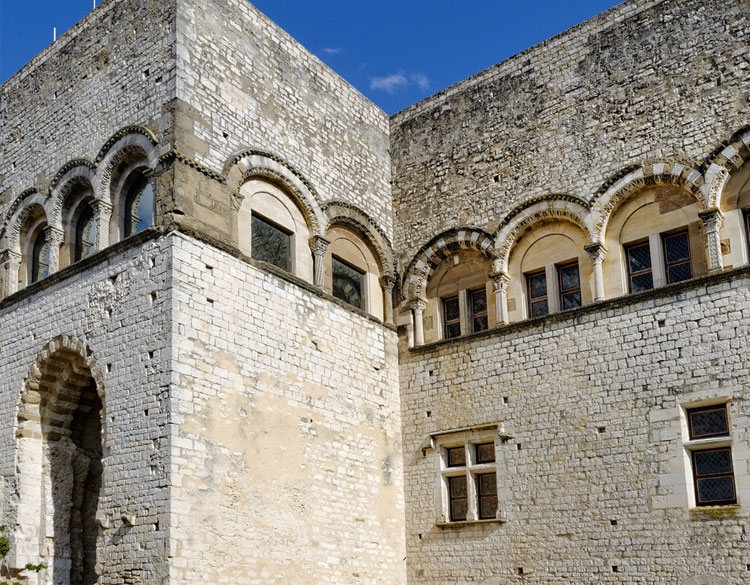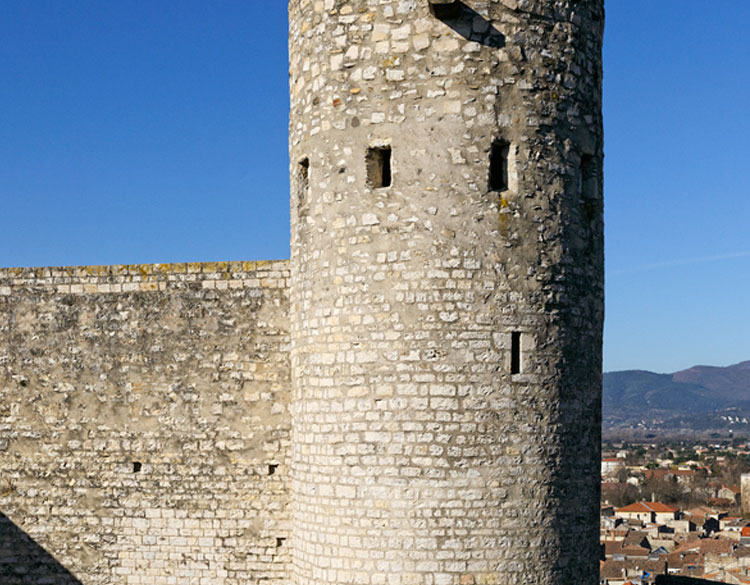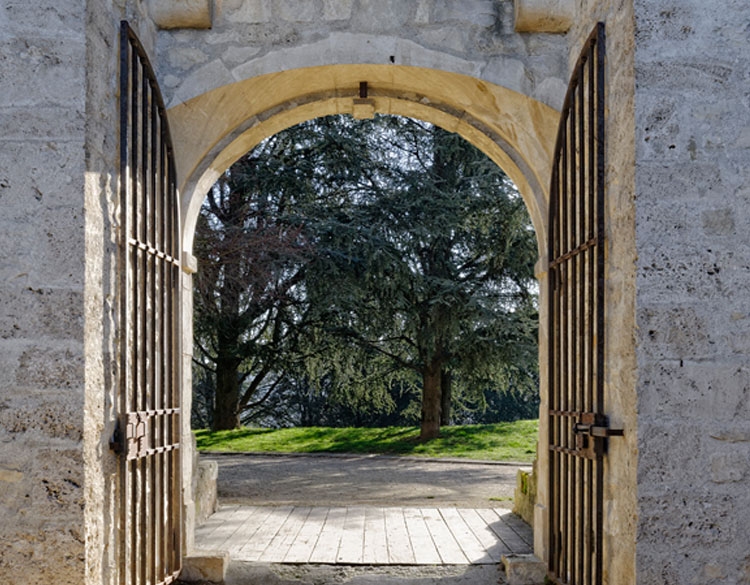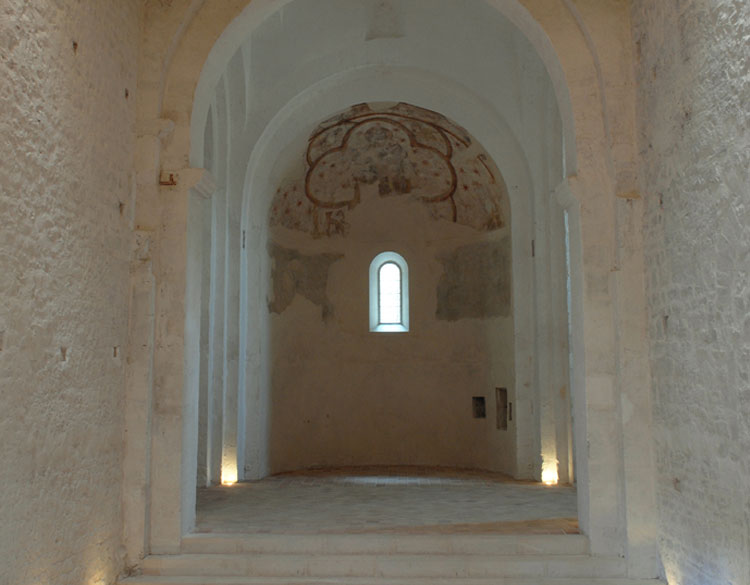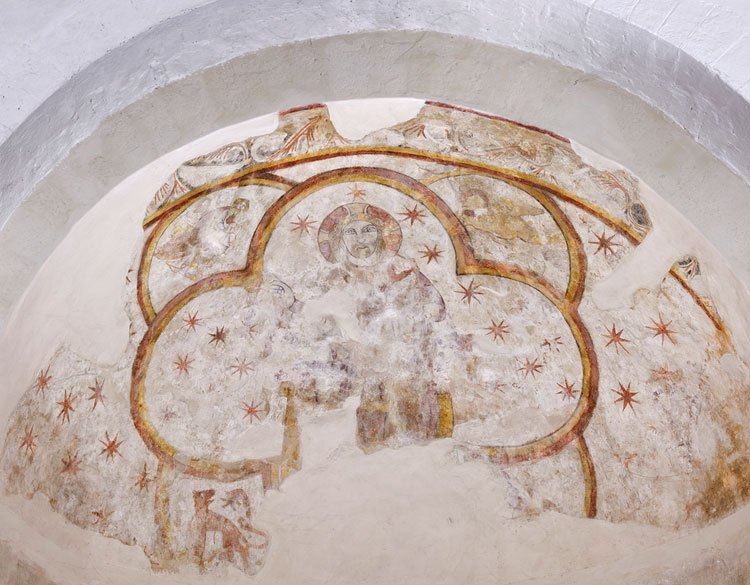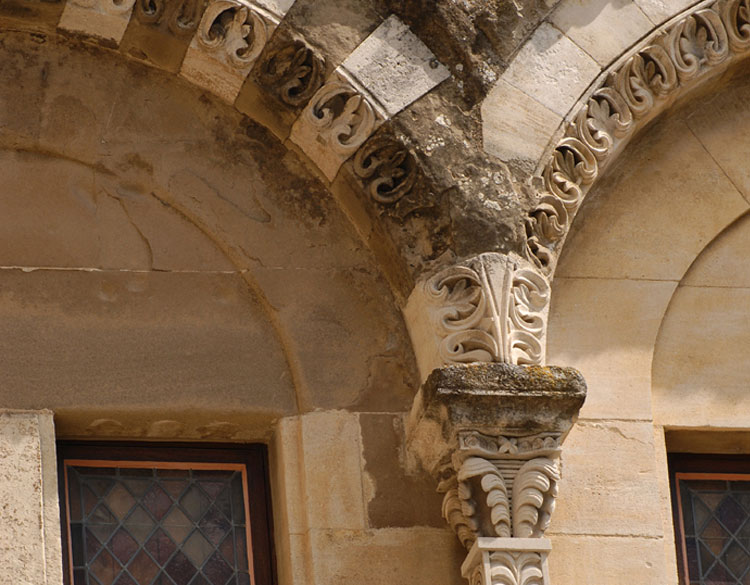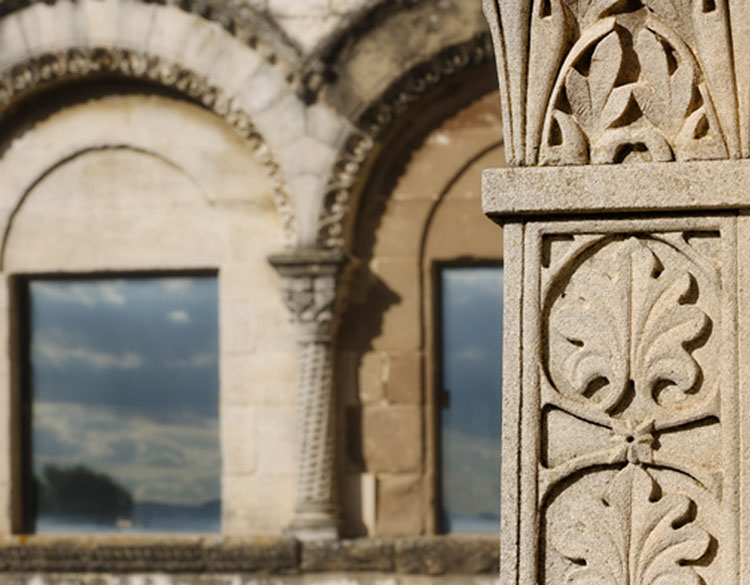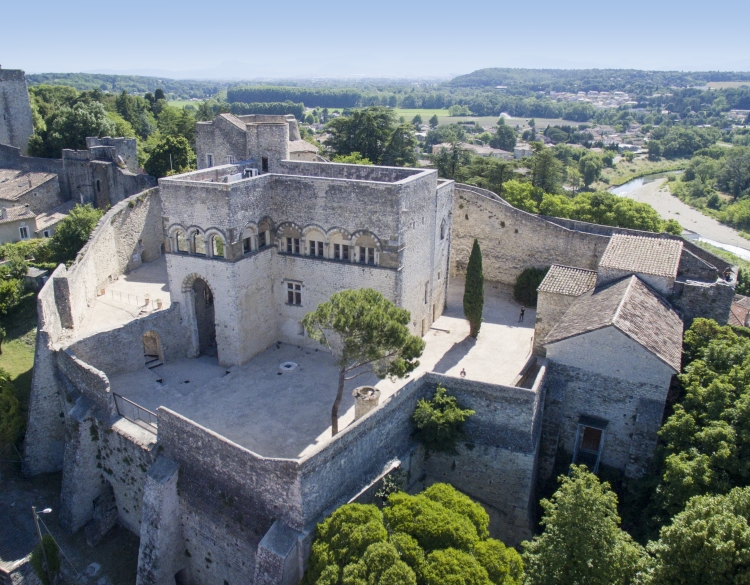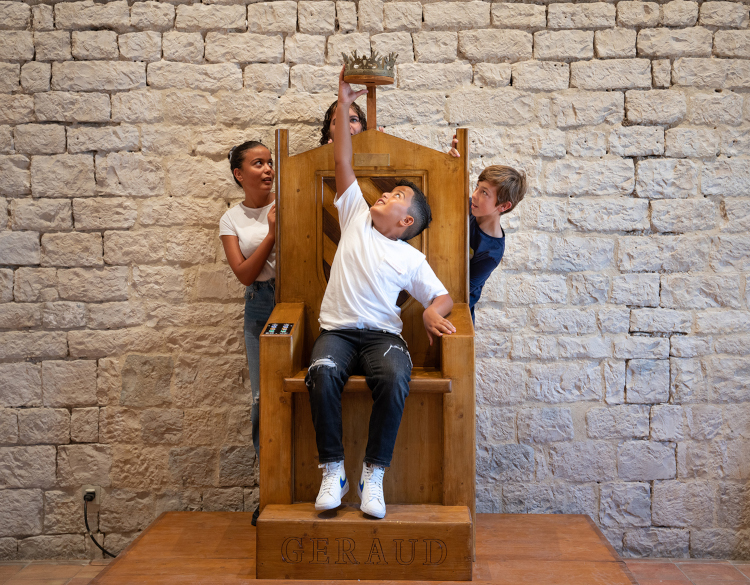A place, a story
The rocky hillock chosen by the Adhémars offered obvious strategic advantages being close to two major communication routes, the Rhône and the road between Lyon and Arles. On the margins of both the Burgundy and the Provence kingdoms, at the crossroads of powerful bishoprics, this position furthered these feudal lords' autonomy.
The parish church was built at the end of the 11th century in the first southern Romanesque style. A few antique remnants from a previous building were re-used. The mural of the apse, Christ surrounded by the Evangelists, can be dated back to the end of the 13th century.
The first members of the Adhémar lineage were mentioned as early as 985. At the end of the 11th century, this powerful family took part in the first crusade and at the same period, their name was associated with the place; the name Montélimar actually derives from "Adhémar de Monteil". The first donjon erected by the feudal lords may have been in wood before being built in stone.
The ideal position of the site allowed the control of the communication routes and was far enough away from the political centre of the Empire (Rhineland, Alsace) to enable an independence confirmed in 1164. At the end of the 12th century, Géraud Adhémar had a palace built which flaunted his claims: Emperor Fredric II Barbarossa was a guest there in 1178 and Imperial Diplomas were also signed within its walls. In 1198, Géraud Adhémar and his brother Lambert, joint feudal lords, signed a charter promising the inhabitants to moderate taxes. The site was fortified in the 13th century with the addition of a square tower followed by a surrounding wall. There was also a second castle dating back to the same period, of which only the Tower of Narbonne remains today: the two brothers who ended up as rivals thus stated their power. The objects of greed, notably from the Popes of Avignon in the 14th century, the town of Montélimar and its castles finally went to the French crown in 1449.
In the 16th century, during the Wars of Religion, the town suffered several sieges before being left to the Protestants until 1622. From 1588, the Duke of Lesdiguières, the head of the Dauphiné reformers, gave orders for a citadel to be built. With its four bastions, it considerably changed the topography of the site. It was surrounded with moats and the main entrance , called the royal door, was to the east, on the town side. In those days, the chapel was used as a powder store and arsenal. The royal officers lived there between 1622 and 1788.
In 1791, the citadel was transformed into a prison. The prisoners, both men and women, lived in cells spread over the three levels of the dwelling; those on the ground floor remain with graffiti that have survived to this day. In 1926, Montélimar stopped being the capital of the administrative district and the castle ceased to be a prison.
The Adhémars' château became a listed building in 1889 and the Tower of Narbonne and the town curtain wall in 1938. The purchase of the site by the Drôme Department between 1947 and 1955 was followed by several restoration programmes, among which those recently of the chapel and of the inner courtyard, and by its opening to the public in 1983.
